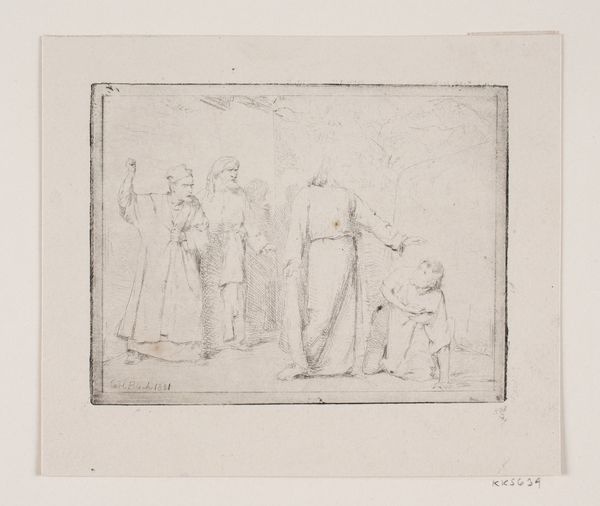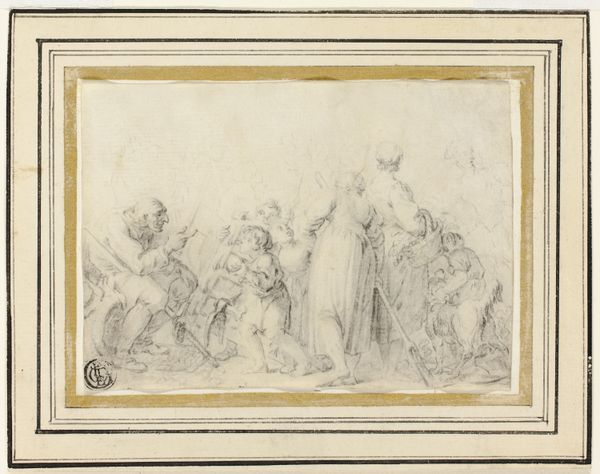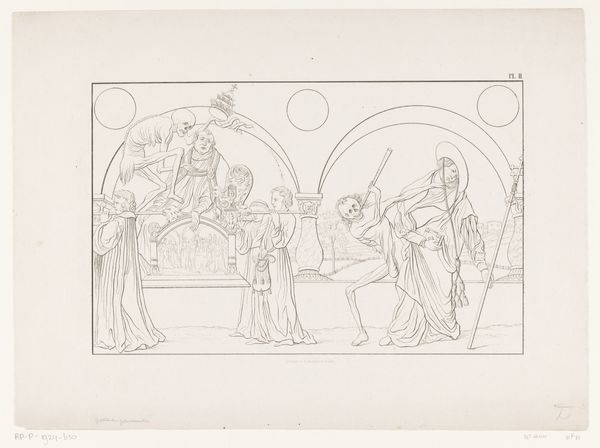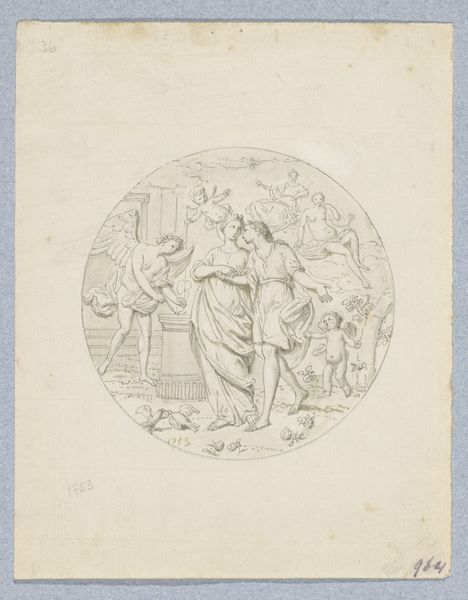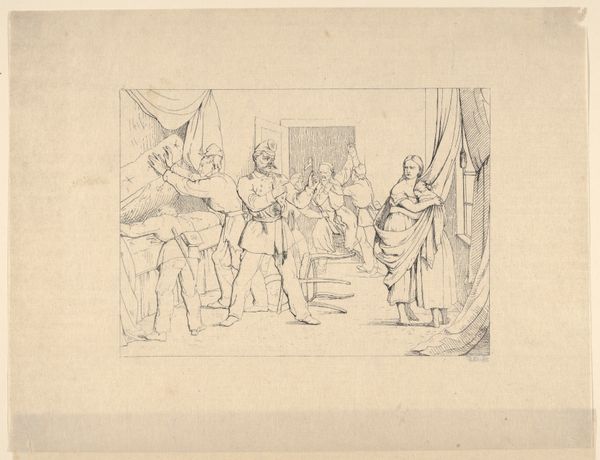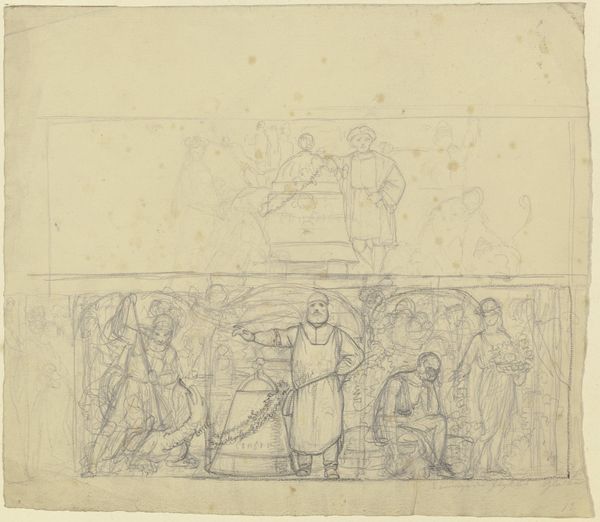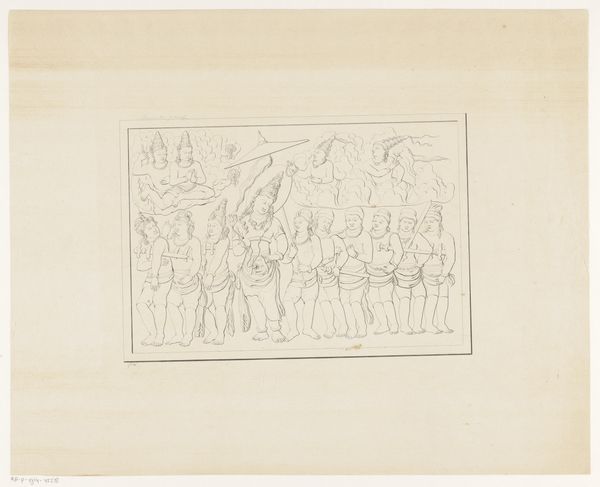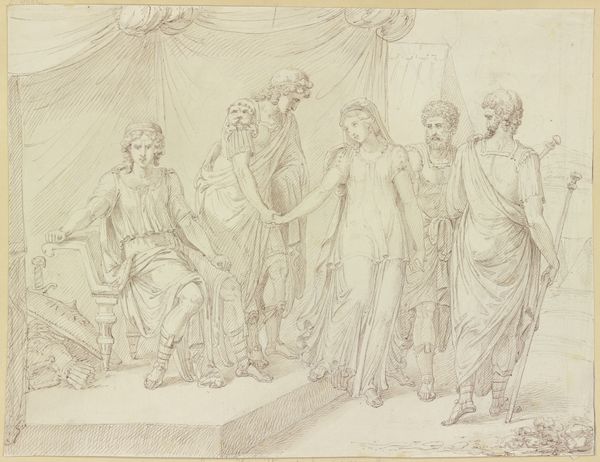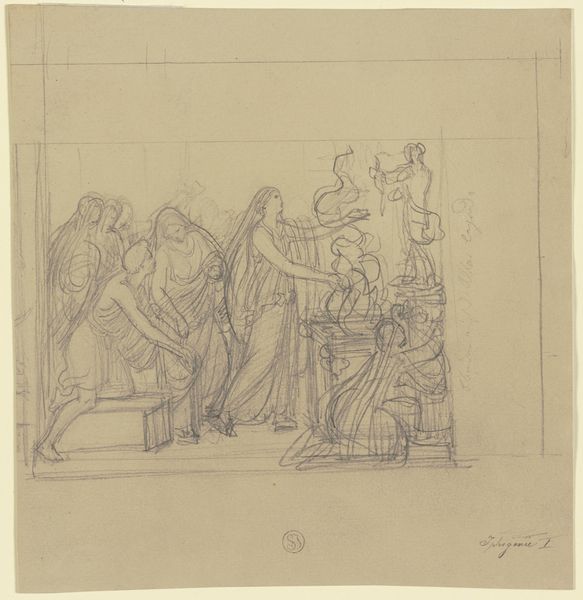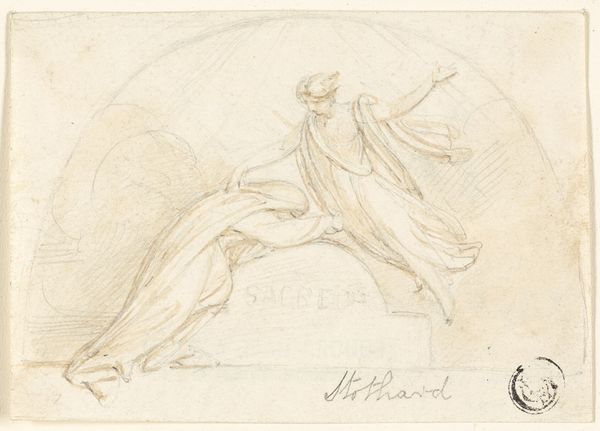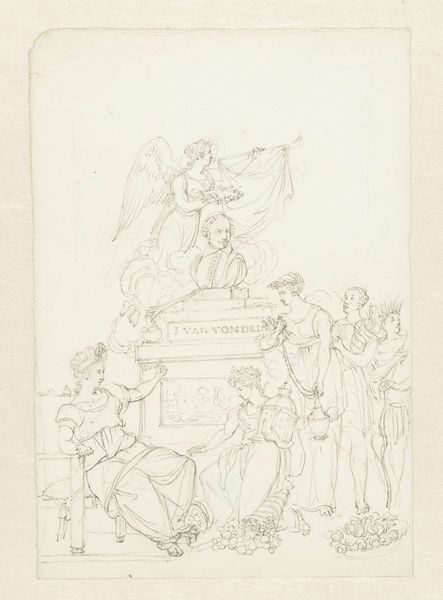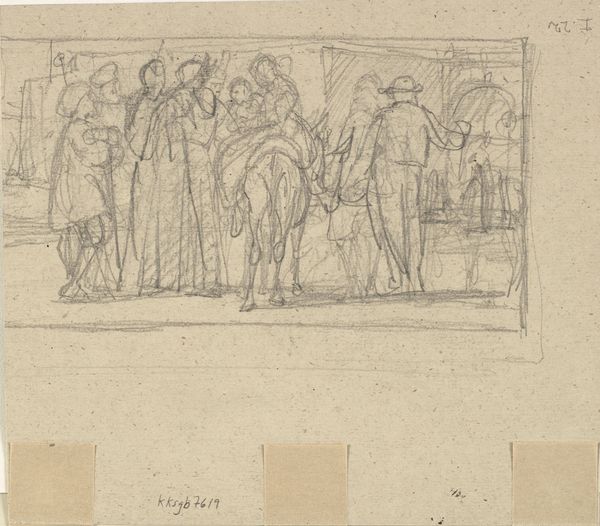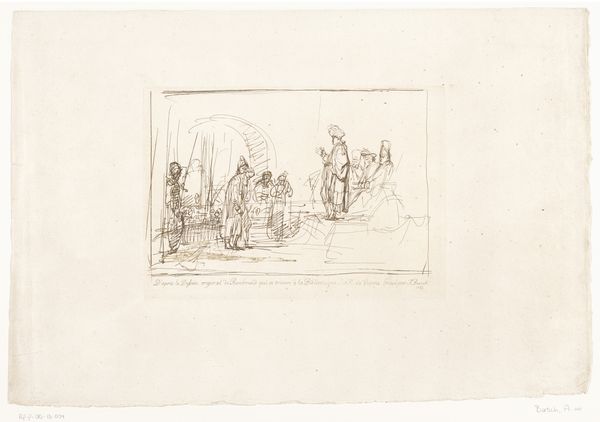
Weibliche Genien halten ein Medaillon mit dem Bildnis Goethes
0:00
0:00
drawing, paper, ink, pencil
#
portrait
#
drawing
#
ink drawing
#
neoclassicism
#
paper
#
ink
#
pencil
#
academic-art
Copyright: Public Domain
Editor: Here we have Bernhard Neher the Younger's drawing, "Weibliche Genien halten ein Medaillon mit dem Bildnis Goethes," made with pencil and ink on paper. It reminds me of a frieze you might see on a classical building. How do you interpret this work? Curator: Immediately, the laurel wreath surrounding Goethe's profile speaks of honor and timelessness. Note how the female figures—the "genii"—flanking the portrait are draped in classical robes, linking Goethe to a lineage of intellectual and artistic achievement that reaches back to antiquity. What feelings do the torch and lyre evoke in you? Editor: Well, the torch makes me think of enlightenment and knowledge, and the lyre obviously represents music and the arts. Curator: Precisely! Neher utilizes these symbolic elements to construct a visual argument. The cultural memory associated with these images elevates Goethe, placing him within the pantheon of great thinkers and creators. It is fascinating to consider the emotional power that these figures—angels, really—have retained through centuries of art history. What continuities do you see between the classical era and the Romantic period? Editor: That's a lot to unpack. Maybe the desire to immortalize significant figures? The use of symbolism to create a visual language feels really consistent. I hadn’t thought about Goethe being deliberately placed in that lineage before. Curator: Indeed. Visual symbols are potent tools for shaping and preserving cultural values. Reflect on how such imagery still resonates in our contemporary world.
Comments
No comments
Be the first to comment and join the conversation on the ultimate creative platform.
